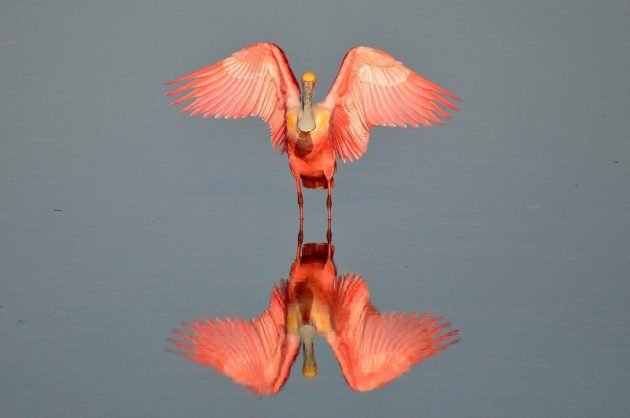
Photo by Mac Stone.
Yesterday, Audubon released a report years in the making, entitled, “Survival by Degrees: 389 Species on the Brink.” As Communications Director for Audubon Florida, I wanted to both digest their findings and reflect on what their conclusions mean not only as a birder, but as an environmentalist as well.
The data and modeling are complex, but the story these numbers tell us simple:
Audubon scientists used over 140 million data points to analyze which North American bird species would be most affected by climate change. Where did this information come from? Many datasets were compiled directly from citizen science efforts, including Christmas bird counts! While many of us – myself included – use eBird.org to keep track of our own birding efforts and life lists, each time we record an observation we are directly contributing to landmark reports like this one, science that can shift policy priorities and conservation actions. Go us!

Roseate Spoonbills are predicted to move northward as a result of climate change. Photo: John Fox/Audubon Photography Awards.
While nearly two-thirds of our North American avian species are threatened with extinction if climate change warming stretches to 3 degrees C, we can save over 75% of these vulnerable varieties by holding down warming to 1.5 degrees C. Perhaps most importantly, we already know how to reduce the effects of climate change; but we must shift the conversation and the political will in our country – and around the world – to make it happen.
Audubon lists many ways we can take action to reduce climate change, but I especially appreciate Audubon Florida’s model ordinance toolkit. So much of what we can do to benefit the planet actually starts in our own backyards, in our own cities, in our own counties. How do we create a network of more sustainable neighborhoods? We work with city councils and commissioners to pass ordinances that increase tree canopy, that transition our bus systems to electric vehicles, that address stormwater infrastructure issues, and so much more. Every concrete step we take is one more step towards protecting the bird species we love.
On 10000 Birds, I usually write about my love of searching for avian friends in local hotspots or novel ecosystems. Layering the conclusions from the report across my birding experiences doesn’t make them “depressing” or any less fun; instead, I add predictions of climate change to the knowledge I’ve accumulated on field identification marks, habitat, and behaviors.
The more I know about climate change, the more I appreciate each and every moment I can spend birding, and the harder I work towards protecting as many species as I can.











Leave a Comment